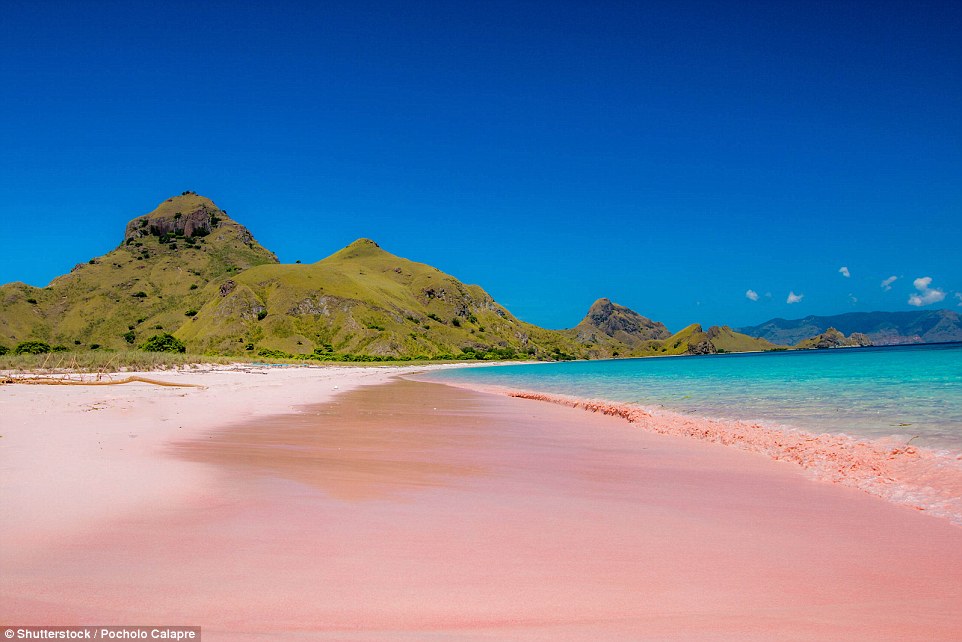The Stunning Pink Beaches Around the World (and It`s not a Trick of the Light)
Translator : Novita Cahyadi
Selasa, 18 Oktober 2016

PANTAI PINK di Pulau Padar dekat Pulau Komodo di Nusa Tenggara Timur (NTT) memukau dunia dan dibandingkan dengan sejumlah pantai serupa yang tersebar di Italia, Yunani, dan Bermuda.
Pantai berpasir dan perairan biru akan menginspirasi masyarakat dunia untuk berkunjung ke kawasan pariwisata kaya matahari - terutama ketika cuaca dingin.
Namun sementara pembaca mungkin membayangkan pasir putih atau pucat kuning, ada beberapa destinasi wisata di seluruh dunia di mana pantai-pantai tersebut benar-benar memiliki warna merah muda.
Salah satu contoh yang paling terkenal adalah Pink Sands Beach, yang membentang tiga di Pulau Harbour di Bahama.
Fenomena tersebut tidak disebabkan oleh polusi atau tipuan cahaya melainkan oleh mikro-organisme yang dikenal sebagai foraminifera.
Di Bahama, spesies makhluk kecil, Homotrema rubrum, memiliki cangkang kemerahan menurut Royal Gazette.
Setelah mereka mati, mereka terdampar ke pantai di mana mereka berbaur dengan pasir, potongan karang dan kerangka organisme laut lainnya untuk menciptakan 'pasir merah muda' yang menarik perhatian dunia, seperti dilansir MailOnline.
SANDY beaches and turquoise waters form a vision that will inspire wanderlust in most people - especially when the weather cools.
But while you might have imagined white or pale yellow sand, there are a few destinations around the world where the beaches actually have a subtle shade of pink.
One of the most famous example is Pink Sands Beach, a three-mile long stretch of sand on Harbour Island in the Bahamas.
The phenomenon is not caused by pollution or a trick of the light but rather, a micro-organism known as foraminifera.
In the Bahamas, a species of the tiny creatures, Homotrema rubrum, have reddish shells according to the Royal Gazette.
Once they die, they get washed up on to the beaches where they blend in with the sand, pieces of coral and skeletons of other marine organisms to create the famous 'pink sand'.
-
Terkejut, Seorang Ibu Temukan Kuda Laut Jatuh dari Langit di Rumah
Mum´s Shock After Discovering ´Weird´ Sea Creature Had Dropped from the Sky- Terungkap, Desain Terburuk yang Pernah Dilihat
Who Signed this Off? People Reveal the WORST Design Fails They´ve Seen- Terungkap, Deretan Bangunan Paling Jelek di Inggris
The 10 Ugliest Buildings in the UK Revealed- Ilmuwan Amerika Ungkap Manusia Cenderung Melihat Sisi Baik Antagonis di Film
Humans will Always See the Good Side to Villains and Bad Guys- Kalung Emas Bersia Ribuan Tahun Ditemukan di Northamptonshire
Stunning Gold Necklace Dating Back 1,300 Years is Found in the Grave in Northamptonshire - Terungkap, Desain Terburuk yang Pernah Dilihat
